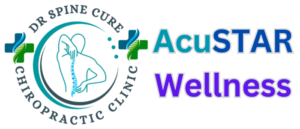How to Use Acupuncture for Pain Relief?: Step-by-Step Guide

Author
Reviewed by Dr Rudresh, MD, DM Chiro (Sweden), CDC (USA) | Europe-Certified Chiropractor
Acupuncture for Pain Relief: How to Use?
What is acupuncture?
Acupuncture is a healing method from ancient China that uses hair-thin needles inserted at specified points on your body to relieve pain and other health issues.
How does acupuncture work?
When the needles are inserted to stimulate acupuncture points, they activate the CNS or PNS nervous system and trigger the release of pain-reducing hormones (also called endorphins or happy hormones) and chemicals in the body. This helps reduce inflammation, relax tense muscles, and interrupt pain signals.
Types of acupuncture therapy
There are three main types of acupuncture:
1. Traditional Chinese acupuncture
Uses thin needles activated by the hand to balance the flow of chi (energy) in meridian pathways. Sterile thin needles are inserted (no pain) at various acupuncture points in different combinations called acupuncture protocols. For example, for migraine pain relief, we use a combination of points over head, temple, foot, legs, hands (called local points, distal points, influential points, command points, etc.).
2. Electroacupuncture
Employs electric stimulation in addition to needle insertion to strengthen the therapeutic effects. Electric needle stimulation (no AC or DC current used) is also called TENS therapy or inferential therapy used by physiotherapists; however, here electrodes are attached to needles. Electroacupuncture has so many benefits like fast results and enhanced therapeutic effects, especially for severe pain, arthritis, sciatica, disc bulges, knee pain, neuropathy, depression, stress, insomnia, cancer pain, fibromyalgia, etc.
3. Ear Acupuncture or Auricular Therapy
Employs needle insertion at the outer ear or auricle. The ear has all points that reflect the full body and organs. Using acupuncture points to stimulate various organs or tissues or systems has the same effects as body acupuncture, discovered by French Neurologist Dr. Paul Nogier.
7 Ways to Use Acupuncture for Pain Relief: Step-by-Step Instructions
Ready to kick pain to the curb with acupuncture? Here’s seven killer ways to make it work for you—step-by-step, no fluff. Whether you’re in Bangalore or beyond, these tricks’ll have you feeling like a new person.
1. Target Lower Back Pain
Got that nagging ache from slouching at your desk? Start by booking a session—hit up a pro like Dr. Rudresh at AcuSTAR Wellness. They’ll poke points like Bladder 23 and 40, chill your tight muscles, and get you moving again—three sessions a week for a month usually seals the deal.
2. Zap Neck Stiffness
Tech neck from endless Zoom calls? Tell your acupuncturist to focus on Gall Bladder 20 and Stomach 9—those spots melt tension like butter. Lie back, let the needles sit for 20 minutes, and feel your neck loosen up—twice weekly for two weeks does wonders.
3. Ease Sciatica Flare-Ups
Sciatica’s leg-zapping misery? Go for electroacupuncture—step one’s finding a clinic (AcuSTAR’s a Bangalore fave). They’ll hit Bladder 34 with a tiny buzz, calming that cranky nerve—start with 1-2 sessions weekly, and watch the pain fade in 3-4 weeks.
4. Knock Out Migraines
Head pounding like a drum? Book a traditional Chinese acupuncture sesh—points like LI4 and GB20 are your pals here. Pop in once a week for six weeks, let those needles work their magic for 30 minutes, and say bye-bye to migraine mayhem.
5. Soothe Arthritis Joints
Knees creaking louder than your old chair? Step one: find a pro (Bangalore folks, AcuSTAR’s got you). They’ll needle Spleen 6 and Liver 3, easing swelling—hit it twice a week for a month, and you’ll be bending without wincing.
6. Calm Muscle Strains
Pulled a muscle chasing the bus? Ear acupuncture’s your quick fix—step one’s snagging a session with an auricular therapy pro. They’ll poke your outer ear points for 20 minutes, once or twice over a week, and that strain’s history.
7. Relieve Shoulder Tension
Shoulders tighter than a Bangalore traffic jam? Get to an acupuncturist—Large Intestine 4 and Triple Warmer 5 are your tickets to relief. One session weekly for three weeks, needles in for 25 minutes, and you’ll be shrugging off pain like a champ.

Pro Tip: Pair these with a chill playlist—makes the needle time fly.
Heads-Up: Hydrate post-session; it amps up the healing vibes.
Bangalore Bonus: AcuSTAR Wellness rocks these methods—call 7676760107 to lock it in.
Benefits of acupuncture for pain relief
Acupuncture provides effective relief for many types of pain:
Relief from different types of pain
Clinical studies show acupuncture helps lessen neck pain, lower back pain, muscle strains, arthritis pain, headaches, and more.
Acupuncture decreases inflammation and relaxes tense muscles that can provoke or worsen pain.
Increased range of motion and flexibility
By relaxing tight muscles, acupuncture often improves mobility and range of motion in painful joints.
Acupuncture Points for Pain
Common Acupuncture Points for Pain Relief
Popular acupuncture points for different types of pain include:
Head and neck points
Stomach 9, Gall Bladder 20, and Governor Vessel 20 for headaches, migraines, and neck tension.
Shoulder and arm points
Large Intestine 4, Liver 3, and Triple Warmer 5 for shoulder and arm pain.
Back and hip points
Bladder 23, 34, and 40 for low backache, sciatica, and hip pain.
Leg and foot points
Liver 3 and Spleen 6 for knee pain, calf strain, and plantar fasciitis.
How many treatments do you need?
For acute pain
For injury-related or flare-up pain, 1 to 3 acupuncture treatments per week over 1 to 4 weeks usually provide relief.
For chronic pain
With longer-standing pain issues, regular treatments spaced 1 to 2 weeks apart over several months work best. Maintenance treatments then sustain pain relief.
Other natural pain relief methods
Self-acupressure and trigger point therapy
Applying pressure to acupuncture points yourself can also activate them for pain relief.
Massage therapy
Massage techniques like myofascial release and deep tissue work help unwind tight muscles and knots that cause pain.
Meditation and yoga
Mind-body therapies like meditation, yoga, and tai chi practice can strengthen the body’s natural pain-dampening systems.

What are Side Effects of Acupuncture?
Here are some common side effects of acupuncture [Special Note: To avoid side effects, always seek acupuncture treatments by qualified medical doctors with additional acupuncture training/qualifications]:
- Bruising: Bruising at the needle insertion sites is common, especially if you have thin skin or are on blood-thinning medications. Bruises typically fade within a few days.
- Mild pain: Some level of discomfort is normal during acupuncture, especially when the needles are first inserted. The pain is usually mild and described as pinpricks, pressure, or dull aches.
- Fatigue: Some patients experience fatigue, sleepiness, or relaxation during or shortly after an acupuncture treatment.
- Nausea: In rare cases, acupuncture can cause mild to moderate nausea, more likely in patients sensitive to needling.
- Fainting: Fainting or feeling lightheaded during or immediately following an acupuncture session is uncommon but possible.
- Bleeding: Minor bleeding or oozing of blood at the needle site can occur; apply pressure to stop it.
- Soreness: Some tenderness or muscle twitching is normal for a few hours after treatment.
- Infection: Though rare, acupuncture can result in a localized skin infection if needles aren’t sterilized.
- Organ puncture: Accidental puncture of internal organs is extremely uncommon when performed by a trained professional.
More FAQs: Your Acupuncture Questions Answered
Yup, it’s a champ for that! Acupuncture targets inflammation and boosts blood flow around joints, speeding recovery from sprains or strains—perfect for Bangalore’s weekend warriors.
It’s not a pill-popping quick fix, but it’s natural—no groggy side effects. Studies from 2024 show it cuts pain intensity by 30-50% for chronic cases, often outlasting over-the-counter stuff.
Totally! Gentle needle techniques can ease those nagging leg aches—my nephew’s a fan after a few sessions calmed his nighttime whining.
It’s a lifeline for fibro folks—easing widespread pain and fatigue by tweaking nerve signals. Research says it drops pain scores by 20%—not a cure, but a solid win.
Nah, leave it to the pros—DIY’s a recipe for bruises or worse. Pros like those at AcuSTAR Wellness in Bangalore know the exact spots to hit safely.
You bet—points like GB20 melt that neck stiffness fast. I’ve dodged a headache or two with a quick session after staring at screens all day.
Chill for 24 hours—your body’s still processing the Qi flow. Light stretches are cool, but skip the gym grind ‘til tomorrow.
Oh, absolutely—points like Spleen 6 are clutch for relaxing that crampy chaos. A friend swears it’s her monthly savior—no more curling up with a hot pack.
Sometimes—plans vary like Bangalore’s weather. Check with your provider; some cover it under alternative therapies, especially with pros like Dr. Rudresh.
No sweat—start with ear acupuncture or acupressure; same perks, no pokes. The needles are so thin anyway, it’s more tickle than terror.
Big time—it’s a gentle way to cut swelling and soreness without extra meds. A 2024 study showed 60% faster recovery vibes with regular sessions.
Look for creds—KPME or AYUSH registration’s a must. AcuSTAR Wellness’s Dr. Rudresh, with 23 years of needle ninja skills, is a no-brainer pick—call 7676760107 to snag a spot!
Conclusion
In conclusion, acupuncture is a safe and natural approach to managing many types of acute and chronic pain issues. Combined with lifestyle changes, dietary restrictions, and other complementary medical therapies, it provides an effective toolbox for long-term pain relief and improvement in quality of life.

Coccydynia (Tailbone Pain) Explained: Understanding Tailbone Pain Causes, Symptoms & Relief
Read More »-
Natural Pain Relief Experts04 Mar 2025 treatment
-
7 Ways How Acupuncture In Bangalore Can Change Your Life - Ultimate Guide04 Mar 2025 treatment
-
Acupuncture Therapy Near Me (You) in Bangalore: AcuSTAR Wellness05 Mar 2025 treatment
-
Coccydynia (Tailbone Pain) Explained: Understanding Tailbone Pain Causes, Symptoms & Relief19 Mar 2025 treatment
-
Best Back Pain Treatment in Bangalore04 Apr 2025 treatment
Other Services
- Neck Pain Treatment
- Sciatica Pain Treatment
- Spondylosis Treatment
- Disc Bulge/Herniated Disc Tx
- Spinal Pain & Nerve Pains
- Scoliosis Correction Treatments
- Kyphosis Correction Therapy
- Posture Correction Treatments
- Arthritis and Joint Pains
- Headaches and Migraines
- Cervical Spondylitis Treatments
- Myofascial Release Therapy
About Us
AcuSTAR Wellness (Dr. Spine Cure) Chiropractic is a premier, KPME-Rgd Spine, Disc & Joint Pain clinic in Bangalore. It offers natural pain relief treatments for back pain, neck pain, sciatica, body pain, spondylitis, knee pain, arthritis, posture correction using chiropractic treatments without surgery. Initiative of Dr. Rudresh, Europe-certified & licenced; HN-Scientific award-winning allopathy doctor cum licensed chiropractor in Bangalore for safe & effective chiropractic adjustments
Opening Hours
- Monday ..... 08:00 - 22:00
- Tuesday ......08:00 - 22:00
- Wednesday..08:00 - 22:00
- Thursday ....08:00 - 22:00
- Friday .........08:00 - 22:00
- Saturday .....09:00 - 22:00
- Sunday: Based on appointment
________________________________
Chiropractic Treatments are based on Appointment Only
Quick Contact
- +91-7676760107
-
#1: Jakkuru Clinic, 425, 12th Cross, Jakkuru main road, Bangalore 560064
#2: Nagarabhavi Clinic, 478, 11th Cr, AP nagar, Nagarabhavi II Stage, Blore 560091 - acustarwellness@mail.com
